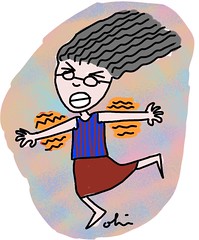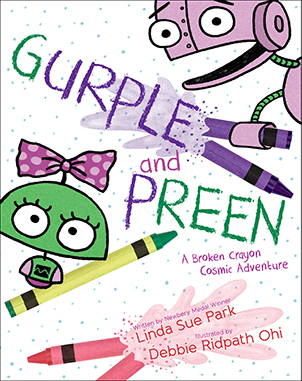Wednesday
Mar082006
Writers and RSI (Repetitive Strain Injury) Prevention
Three years ago, I spent an evening sorting some of my digital photos. This was after a day of writing, but it wasn't the first time I had spent an entire day and evening on the computer. The sorting involved a lot of repetitive mouse movement and clicking. By the end of the evening, my right arm was pretty sore between the elbow and wrist.
The next day, it was still sore. I decided to stay off the keyboard and do some much needed organizing of my office instead, moving books around. I went to the gym later in the day and did my regular workout, including weights. At no point was there a sharp "OW!" type of pain; I still felt just a general soreness, not too serious.
I started typing with my left hand to give my right a break, as well as leaning on my left hand for other tasks as well. Soon my left was worse than my right.
To make a long story short, after only a few days I was in constant pain, and barely able to hold a glass of water. I couldn't even cut my own food. Even turning pages in a book was painful. And the nightmare of every writer: I COULDN'T TYPE. I even tried holding a pencil and poking at the keys that way, but it was too painful.
Meanwhile, I had gone to see a doctor, who sent me to a physiotherapist. My problem wasn't in my wrists (i.e. I didn't have carpal tunnel syndrome); it was in the tendons, which I had managed to tear. I was told I had "golfer's elbow" AND "tennis elbow" in both arms. Ironically, I don't play either game. The physiotherapy clinic treated me with ultrasound, hot/cold pads, and massage. I learned how to exercises that would gradually heal and strengthen my tendons. I was told that if I had taken a real break that weekend after my first symptoms appeared instead of re-organizing my office and going to the gym, I would likely have recovered almost immediately.
Eventually I had to acknowledge the fact that I wasn't going to get better as quickly as I had hoped. I bought and starting using ViaVoice, voice recognition software for the Mac. I was impressed by how accurate it was with transcription, but the resulting text almost always needed some editing and I found editing an agonizing process. Sample sequence of voice commands to delete an extra character in a word: "Move down four lines." "Move right five words." "Move right two characters." "Select right one character." "Delete." I had to speak these commands slowly and clearly, else the program would think that I was dictating text. Once I got so frustrated that I swore into my microphone ... and ViaVoice censored my swearing.
Trying to write this way was torture, but better than not being able to write at all.
Three years later, I'm much improved and haven't used ViaVoice in a long while. But I've smartened up: I take regular breaks away from my keyboard. If I feel any pain, I stop and take a break (yes, even if I have a deadline). I set an alarm on my computer using a small app called IMOnTime to remind me to take a short arm break every 30 minutes. During this break, I walk around, do arm stretches.
Before the tendinitis hit, I never had problems...there was no gradual accumulation of warning signs. I'm telling you all this in hopes that my experience will help prevent some of you from repeating my mistakes.
Some things I've learned:
Take breaks, even if you're under work pressure.
Never ignore soreness and pain.
Don't assume that you're invulnerable. That's the mistake I made.
If you do hurt yourself, be patient while you're healing. Don't try to get back to "normal" too quickly or you'll have another setback (I speak from experience). It took me about THREE YEARS to get back to a relatively normal work schedule.
Some useful resources:
Computer related repetitive strain injury: My favourite RSI page.
Ideal typing posture
Ergonomic guidelines for arranging a computer workstation
Avoiding Repetitive Strain Injury (Forbes article)
Repetitive Strain Injury
How to prevent RSI
 |
The next day, it was still sore. I decided to stay off the keyboard and do some much needed organizing of my office instead, moving books around. I went to the gym later in the day and did my regular workout, including weights. At no point was there a sharp "OW!" type of pain; I still felt just a general soreness, not too serious.
I started typing with my left hand to give my right a break, as well as leaning on my left hand for other tasks as well. Soon my left was worse than my right.
To make a long story short, after only a few days I was in constant pain, and barely able to hold a glass of water. I couldn't even cut my own food. Even turning pages in a book was painful. And the nightmare of every writer: I COULDN'T TYPE. I even tried holding a pencil and poking at the keys that way, but it was too painful.
Meanwhile, I had gone to see a doctor, who sent me to a physiotherapist. My problem wasn't in my wrists (i.e. I didn't have carpal tunnel syndrome); it was in the tendons, which I had managed to tear. I was told I had "golfer's elbow" AND "tennis elbow" in both arms. Ironically, I don't play either game. The physiotherapy clinic treated me with ultrasound, hot/cold pads, and massage. I learned how to exercises that would gradually heal and strengthen my tendons. I was told that if I had taken a real break that weekend after my first symptoms appeared instead of re-organizing my office and going to the gym, I would likely have recovered almost immediately.
Eventually I had to acknowledge the fact that I wasn't going to get better as quickly as I had hoped. I bought and starting using ViaVoice, voice recognition software for the Mac. I was impressed by how accurate it was with transcription, but the resulting text almost always needed some editing and I found editing an agonizing process. Sample sequence of voice commands to delete an extra character in a word: "Move down four lines." "Move right five words." "Move right two characters." "Select right one character." "Delete." I had to speak these commands slowly and clearly, else the program would think that I was dictating text. Once I got so frustrated that I swore into my microphone ... and ViaVoice censored my swearing.
Trying to write this way was torture, but better than not being able to write at all.
 |
Three years later, I'm much improved and haven't used ViaVoice in a long while. But I've smartened up: I take regular breaks away from my keyboard. If I feel any pain, I stop and take a break (yes, even if I have a deadline). I set an alarm on my computer using a small app called IMOnTime to remind me to take a short arm break every 30 minutes. During this break, I walk around, do arm stretches.
Before the tendinitis hit, I never had problems...there was no gradual accumulation of warning signs. I'm telling you all this in hopes that my experience will help prevent some of you from repeating my mistakes.
Some things I've learned:
Take breaks, even if you're under work pressure.
Never ignore soreness and pain.
Don't assume that you're invulnerable. That's the mistake I made.
If you do hurt yourself, be patient while you're healing. Don't try to get back to "normal" too quickly or you'll have another setback (I speak from experience). It took me about THREE YEARS to get back to a relatively normal work schedule.
Some useful resources:
Computer related repetitive strain injury: My favourite RSI page.
Ideal typing posture
Ergonomic guidelines for arranging a computer workstation
Avoiding Repetitive Strain Injury (Forbes article)
Repetitive Strain Injury
How to prevent RSI







 Wednesday, March 8, 2006 at 2:35 PM
Wednesday, March 8, 2006 at 2:35 PM
Reader Comments (1)
Hi Debbie,
Thank you for sharing your information about RSI! I had been suffering from RSI for a couple of years and found strength to not give up in websites like yours! It is so hard to stay upbeat sometimes…
I am currently assembling a Google map with physicians and physical therapists who have substantial knowledge of Repetitive Strain Injuries. I was wondering if you know any good medical people I could additionally recommend on my map?
Repetitive Strain Injury Experts
Thank you for your help!
Clemens